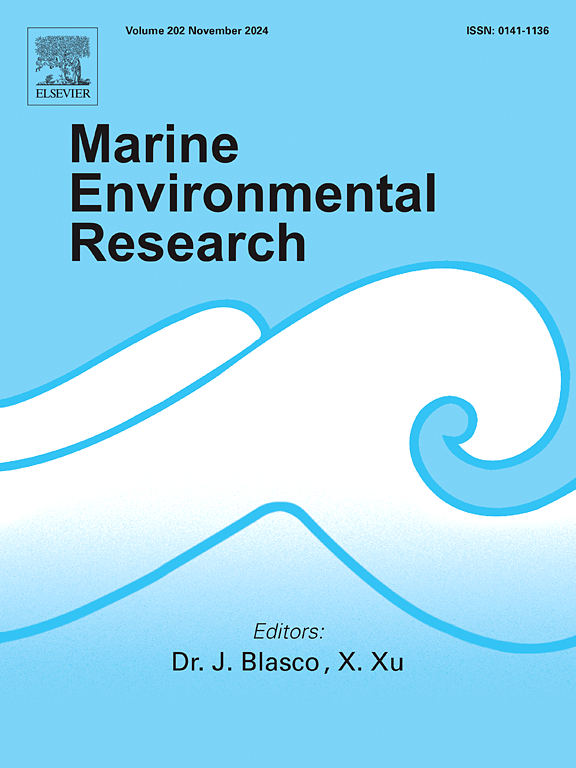地中海的人为纤维:水柱中被忽视的一类微粒的方法和监测
IF 3
3区 环境科学与生态学
Q2 ENVIRONMENTAL SCIENCES
引用次数: 0
摘要
人为颗粒(APs)在海洋环境中广泛存在,但关于人为纤维的知识仍然存在空白。本研究旨在评估水柱中APs的存在,包括天然纤维和合成纤维。对地中海海水中纤维的文献综述表明,目前的取样方法尚不完善。比较了两种采样方法,确定了收集纤维的最佳方法:新型原位泵(20 μm网状过滤器)和WP2浮游生物网(200 μm)。在西地中海的三个区域(Gulf of Asinara, Capraia Island, Capo Carbonara)应用了原位泵是最有效的方法。μFTIR表征的ap以纤维素和聚酯纤维为主,反映了全球纺织纤维的生产情况。Asinara地区是受影响最严重的地区(平均393.7个/m3)。这项研究强调了纤维在水柱中的普遍存在,并强调了进一步调查对海洋生物群的潜在影响的必要性。本文章由计算机程序翻译,如有差异,请以英文原文为准。
Anthropogenic fibers in the Mediterranean sea: Methods and monitoring of an overlooked category of microparticles in the water column
Anthropogenic particles (APs) are widespread in the marine environment, but knowledge gaps remain regarding anthropogenic fibers. This study aimed to evaluate the presence of APs, including natural and synthetic fibers, in the water column. A literature review on fibers in Mediterranean seawater revealed that current sampling methods are underdeveloped. Two sampling methods were compared to determine the best approach for collecting fibers: a new in-situ pump (20 μm mesh filter) and a WP2 plankton net (200 μm). The in-situ pump was the most effective method and was applied in three areas of the Western Mediterranean Sea (Gulf of Asinara, Capraia Island, Capo Carbonara). The predominant APs, characterized by μFTIR, were cellulose and polyester fibers, reflecting the global textile fiber production. The Asinara area was the most impacted area (average of 393.7 items/m3). This study highlights the ubiquitous presence of fibers in the water column and underscores the need for further investigation of potential impacts on marine biota.
求助全文
通过发布文献求助,成功后即可免费获取论文全文。
去求助
来源期刊

Marine environmental research
环境科学-毒理学
CiteScore
5.90
自引率
3.00%
发文量
217
审稿时长
46 days
期刊介绍:
Marine Environmental Research publishes original research papers on chemical, physical, and biological interactions in the oceans and coastal waters. The journal serves as a forum for new information on biology, chemistry, and toxicology and syntheses that advance understanding of marine environmental processes.
Submission of multidisciplinary studies is encouraged. Studies that utilize experimental approaches to clarify the roles of anthropogenic and natural causes of changes in marine ecosystems are especially welcome, as are those studies that represent new developments of a theoretical or conceptual aspect of marine science. All papers published in this journal are reviewed by qualified peers prior to acceptance and publication. Examples of topics considered to be appropriate for the journal include, but are not limited to, the following:
– The extent, persistence, and consequences of change and the recovery from such change in natural marine systems
– The biochemical, physiological, and ecological consequences of contaminants to marine organisms and ecosystems
– The biogeochemistry of naturally occurring and anthropogenic substances
– Models that describe and predict the above processes
– Monitoring studies, to the extent that their results provide new information on functional processes
– Methodological papers describing improved quantitative techniques for the marine sciences.
 求助内容:
求助内容: 应助结果提醒方式:
应助结果提醒方式:


